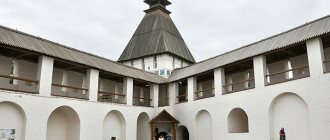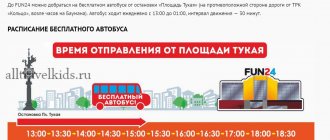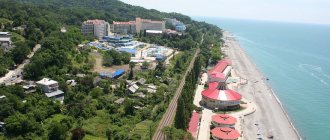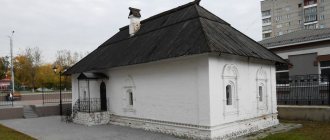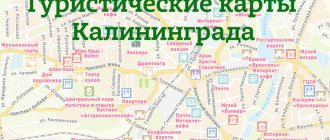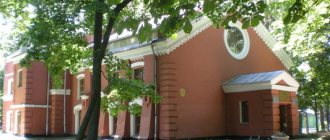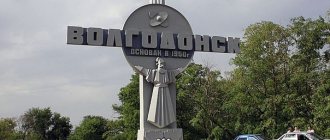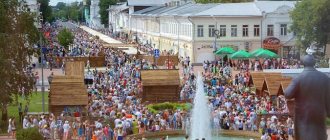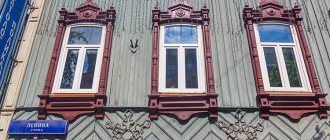Legend says that the city of Brest appeared by accident. On the way to Lithuania, one merchant got lost in a quagmire and reached a small island, making his way with the help of tree trunks. Subsequently, he founded a city on this site, which was named Berestye because of the large number of birch trees.
The first mention of the settlement dates back to 1019 - according to the Tale of Bygone Years, it was a large, well-fortified and rich settlement. It did not play a special role in political or social life, but at the beginning of the 11th century it became an important trading point on the border with Poland and Lithuania.
During military campaigns, Brest was destroyed and rebuilt several times, and it played a special role in the events of World War II. The city was one of the first to be attacked by fascist troops and heroically defended itself, despite the enemy's numerical advantage.
Monuments and landmarks of Brest are associated with its contribution to the Great Victory, its development in different periods of history and significant people who lived on its territory. When you choose where to stay, be sure to study the reviews and prices of Brest hotels to choose a decent option.
What other interesting places in Belarus near Brest and beyond can be included in your trip - in this guide.
For ease of route planning, we have marked all the mentioned attractions on the city map:
Brest Fortress
The fortress was founded in 1836, but its construction continued for another 80 years. It was built of brick. Today the fortress is a memorial complex. Previously, this place was the site of the ancient border city of Brest-Litovsk.
The fortress was rebuilt and strengthened several times. After the First World War, it became the site of the shameful Treaty of Brest-Litovsk. The fortress then became a Polish possession. During the Second World War it was captured by the German army, but then transferred to the Soviet Union. After 2 years, the fortress once again survived an attack by the Nazis, but survived thanks to the desperate resistance of its defenders.
Shopping and souvenirs
In Brest you can go shopping, because Belarusian goods are of high quality. According to the recommendations of the portal “Tourist Brest Region”, you should pay attention to the following industries:
- First of all, tourists go for excellent knitwear; a huge selection is presented at the market called “Old Town” on 28 July Street. Most often it is open until lunch, on all days of the week except Monday.
- The pride of Belarus is linen products. These things are different in that they warm you up on a cold day in winter and refresh you on a hot day. This is not necessarily clothing; you can purchase a shawl, towel and other goods. Straw items are also in great demand. They are usually bought as souvenirs, but they are also suitable for household use. You can purchase an unusual panel, doll, basket or hat.
- In Belarus, people have been experts in the production of ceramic products for a long time. The secrets of creating such goods are not revealed to anyone. You can buy not only a vase or ceramic plates, but also refrigerator magnets, toys and other items.
- Many stores in Brest offer a large selection of Belarusian cosmetics. You can verify the quality by reading the product description on the packaging.
- Belarusian alcohol is very popular. “Krichevsky” balm with wormwood or “Sorcerer” with prunes will appeal to many.
Fifth Fort of the Brest Fortress
The building appeared in the 70-80s of the 19th century. Today a branch of the memorial complex is organized here.
The fort was part of a defensive system that was created to stop the enemy at the distant approaches to the fortress. The area of the structure is 0.8 square meters. km, pentagonal shape. Brick was used for construction; the structure was surrounded by an earthen rampart with a moat, which was filled with water. A caponier was installed in front for 6 guns - fire could be fired in two directions.
At the beginning of the last century, the fort was modernized by covering it with a 2 m layer of concrete. After the war, the structure gradually deteriorated, but in 1997 a large-scale restoration was carried out. Today, the Museum “History of Fortification and Armament” is open here, and an impressive collection of artillery weapons is displayed in the open area.
Kholm Gate
The object is a symbol of the Brest Fortress, into the Citadel of which 4 such gates led. The building was built at the beginning of the 19th century in the neoclassical style. The external facade is decorated with turrets, which were preserved partly due to severe damage during the Great Patriotic War. The Kholm Gate was built from red brick, on which marks from bullets and shells remained as a memory.
Attractions in the surrounding area
Bison on the Brest – Minsk highway
Coordinates: 53.299643, 26.368142 Address: Baranovichi district, Petkovichi How to get there: highway M1 Brest-Minsk near the village. Petkovichi
Bison are noble animals that are considered a symbol of Belarus. In their honor, on the Brest-Minsk highway in 2003, a 30-meter figure of a huge bison with a tucked tail and horns pointed forward was erected.
The sculpture was created on the initiative of local authorities with money from patrons.
Superstitious drivers claim that it brings good luck on the road and protects against unwanted encounters with traffic police officers.
Belaya Vezha
Address: Kamenets, st. Lenina, 3a Opening hours: Wed-Sun 09:00-18:00
Belaya Vezha is a defense and guard structure built in the 13th century. The height of the tower installed on a hill is 35 m, and from its upper part a picturesque view of the surrounding area opens.
Throughout its history, it has withstood attacks by enemy troops more than once and served both as an ammunition depot and a platform for repelling attacks. Now it is a branch of the Brest Museum of History and Local Lore.
Ostrich farm
Address: Kozische village Phone: +37 Website: https://www.straus-kobrin.by Opening hours: daily in winter 10:00-17:00, in summer 10:00-19:00 Cost: 4.5 bel. rubles for adults, 3.5 bel. rubles for children over 6 years old How to get there: along the E30 highway northeast to the village of Kozische
The ostrich breeding farm, located near Brest, is the largest ostrich breeding enterprise in the CIS. It was founded in 2002 on an area of about 50 hectares, and currently houses about 350 individuals of the black ostrich, which is found in South Africa.
Birds behave in the same way as in the wild, and visitors can not only watch them, but also listen to an interesting excursion.
On site there is a cafe serving delicacies made from eggs and ostrich meat, and a souvenir shop.
Trinity Church in Chernavchitsy
Address: Chernavchitsy village, st. Brestskaya, 33 Opening hours: daily 08:00-20:00
The temple was erected at the end of the 16th century on the initiative of the governor Nicholas Christopher Radziwill after his return from Jerusalem.
In addition to its spiritual significance, it had strategic significance - for protection against attacks, there are loopholes in the pediment shield. At the beginning of the 19th century, the church was transferred to the ownership of the Orthodox diocese, and at the beginning of the 20th it again passed to the Catholics.
Since ancient times, three statues have been preserved in the temple - St. Dominic, St. Martin and St. Anthony, which are located in the niches of the main facade.
Nemtsevich Estate
Address: Skoki village, st. Mira, 48b Phone: Website: https://nemtsevichi.by Opening hours: Tue.-Sun. 10:00-19:00 Cost: 2.5 bel. rubles for adults, 1.5 bel. rubles for students, 2 bel. ruble for pensioners
The Baroque manor was built in the 1770s and belonged to the ancient Nemtsevich family, well known in the Principality of Lithuania. Its representatives occupied important government positions in different historical periods and had extensive connections around the world.
Bavarian Prince Leopold, the Czartoryski princes, Emperor Alexander III, writer Ian Fleming, author of James Bond novels stayed at the estate. Now there is a museum with an exhibition that demonstrates the life of the gentry and the Nemtsevich family.
Obelisk bayonet
The main monument of the Brest Fortress as a memorial complex. The design appeared in 1971. Its height is 104.5 m, and its weight is 620 tons. Towards the base it thickens to 5.5 m.
The obelisk bayonet is the bayonet of the famous “Three Line” - this rifle was in service with the Soviet Army during wartime. The monument is a symbol of the victory of the Soviet people over the Nazis. The obelisk consists of 10 sections, has a steel frame and is lined with titanium sheets. The monument is visible from afar, and in the Brest Fortress it can be seen from anywhere.
Parks and monuments, streets
Lantern Alley
Address: st. Gogol
The alley of forged lanterns in Brest was opened in 2013 in honor of one of the anniversaries of the liberation of the city from the German occupiers.
The project was initiated by Mayor Alexander Palyshenkov, and funds were raised by large sponsoring enterprises. The author of the lanterns was the famous Brest sculptor and blacksmith Alexander Chumakov.
Each of the lanterns represents a separate art object with its own theme (sculptures of representatives of different professions, a globe lantern, a lamp with a still life, etc.). Since the alley is located on Gogol Street, there are lanterns dedicated to the writer’s work.
Lucky Boot
Address: st. Sovetskaya, next to the TOPO store
The “Lucky Boot” monument was erected in honor of the opening of one of the shoe stores.
Associated with it is a legend about a woman Anna Alexandrovna Levitskaya, who lived in Lviv, who owned magic boots that brought financial well-being. She inherited them to one of her sons, and he passed them on to his descendants, thanks to which the whole family was prosperous and successful.
The object is a boot, which, according to rumors, is exactly copied from the “magic” shoe.
Winter Garden
Address: st. Mitskevicha, 28/1 Phone: +37 Opening hours: Wed.-Sun. 11:00-18:00 Cost: 2 bel. rubles, excursions are paid separately
Winter Garden is an educational complex near the building of the old university named after. Pushkin. It consists of sections dedicated to several climatic zones (tropics, subtropics, desert), each of which features characteristic plants. In addition to flora exhibits, the Winter Garden has ichthyological and ornithological components with rare species of fish and birds.
Monument "Courage"
Address: Memorial complex Brest Hero Fortress
The monument is part of the ensemble “Brest Hero Fortress” and was created in 1971 by Moscow sculptor Kibalnikov. It represents the figure of a fighter against the background of a 36-meter high banner.
Compositions related to the events of 1941 are engraved on the reverse side: “Attack”, “Meeting”, “The Last Grenade”, etc. The Eternal Flame is lit in front of the monument and a guard of honor stands.
Monument "Thirst"
Address: Memorial complex Brest Hero Fortress
The sculptural composition “Thirst” is part of the ensemble of the Brest Fortress and is located on the left bank of the Mukhavets River. It illuminates one of the saddest pages of the heroic defense - the lack of water.
The events took place in the hot summer, and the defenders' water supply was damaged in the first days of the attack. Many soldiers died trying to bring water from the river for children, women and the wounded, as the banks of Mukhavets were shot at from all sides. In memory of the victims, a monument was erected here in the form of a figure of a soldier with a helmet in his hand, crawling towards the water.
Museum of the Defense of the Brest Fortress
In the northeastern circle of the Citadel, only the Engineering Barracks on the central island survived. It was here that the museum was opened in 1956. Red and black illuminated stands create a special impression. In the museum you can see military uniforms on mannequins, items from peaceful life before the war, all sorts of finds from the battle site, and aircraft bombs mounted on the ceilings.
The museum's exhibition is extensive and occupies 10 halls. There is a separate exhibition with cold steel and small arms from the 18th to 20th centuries. Temporary thematic exhibitions are regularly held.
St. Nicholas Cathedral
The temple is located on the territory of the Brest Fortress and is a monument of the Russian-Byzantine style. Construction of the cathedral began in the mid-19th century and took approximately 20 years.
The basilica has three aisles with a stepped composition and sloping cylindrical roofs. The main facade is a two-tier semicircular arch. The first tier is highlighted by an arched entrance portal, the second - by an arcature of 5 bays with a chiming clock above it. The naves are separated by powerful arcades and have barrel vaults as ceilings.
The cathedral contains several shrines. The most prized icon is the one with a particle of the relics of St. Nicholas the Wonderworker. There are also images with particles of the relics of other saints - the Great Martyr Panteleimon, the Blessed Matrona of Moscow, the Saints Amphilochius and Job of Pochaev. The cathedral contains particles of the relics of other revered saints, as well as the Life-giving Cross of the Lord.
Day 1. Road to Belarus
We started from the Moscow Ring Road at 11.00. Our friends had more free time and left three days before us. Either there was a traffic jam on the Minsk highway, or for some other reason, but the navigator paved the way through Ruza and Mozhaisk. The weather was wonderful: sun and +25. I even began to worry that I believed the long-term weather forecast, which reported that there would be rain in Belarus all week and a little more than 10 degrees above zero, and I took only warm clothes with me. However, on the territory of the Smolensk region, we literally drove into the cold, and not far from the border we were covered in rain.
road to Belarus
For lunch we stopped in Yartsevo, in the Smolensk region. There are shops and cafes “Staroye Ruslo” on the highway. Several years ago I was on a bus tour of Belarus and our group was fed in this cafe on the way to Minsk and on the way back to Moscow. Interestingly, here, on both sides of the road, there are two cafes with the same name. We ate only in the one located on the left, if you move towards Minsk, and you need to cross the road via an overpass. The cafe is interestingly decorated. In my opinion, the food is good, although not cheap. The choice of dishes is large and the portions themselves are quite large.
old riverbed
Having passed the border without problems, we moved towards the capital of the union state.
The entire journey from the Moscow Ring Road to the hotel took about 10 hours. We stayed in Minsk at the Agat Hotel on the outskirts of the city.
Agat Hotel Minsk
The hotel is modest, but clean and cozy. Located in an excellent location: on the border with a pine forest, which guarantees fresh air. And the pond separating the hotel area from the road makes it possible to take a walk in the evening and admire the beautiful view of both the hotel itself and the church located across the road. We could see the sunset from our room window. A double room cost 2200 Russian rubles.
agat minsk
True, there is a small stadium nearby, but when we were there it was closed and no events were taking place.
night Minsk
For dinner we went to the cafe “On the Coals”, located in the courtyards of houses, opposite the hotel. This is the only establishment near the hotel that is open until 23.00. The rest, as Google suggested, were already closed. The cafe is quite small, but cute. I only ordered a milkshake worth 100 Russian rubles, which I really liked. One of the best I've had lately.
night Minsk
Soviet street
It is located in the city center and is pedestrian. It is often called Brest Arbat. In 2009, reconstruction was carried out, after which the street became a popular tourist attraction and one of the favorite places for walks among citizens.
The length of Sovetskaya Street is approximately 1.7 km. A special atmosphere here is created by stone estates from the beginning of the last century; the facades of some of them are very picturesque. For lighting, forged lanterns are installed, there are flower beds, small sculptures, and many restaurants and shops.
Sovetskaya Street has changed several names over its history, the last one it received in 1944. At its beginning there is one of the city's attractions - St. Nicholas Fraternal Church.
Route: a big trip around the Brest region
There is a long weekend ahead, so we, together with the KIA car brand, have taken care of a new busy route around Belarus. And this is not just a dynamic weekend trip - here is a big trip for the whole weekend with a cool program. From textbook landmarks to completely hidden places, trendy big city locations and secluded nature trails – a dream trip, no less!
The trip is planned to be extensive: the length of the route on the first day is approximately 410 km, on the second – about 450 km. We did this entire “round the world” with one overnight stay in Brest. But if you want to slow down, spend more time on Brest itself or, for example, on Belovezhskaya Pushcha, an excellent solution would be to book your home for two nights at once and enjoy the west of Belarus at a more measured pace.
Day one: Minsk – Starye Peski – Chernavichi – Vistychi – Skokie – Brest
Starye Peski
52.497388, 25.212601
So that the road from Minsk to the Brest region is not boring and monotonous, halfway we suggest dropping into one incredibly interesting and undeservedly little-known place - Starye Peski in the Berezovsky district. This village is part of the village of Novye Peski (yes, everything is a little confusing). Once upon a time here was the gentry family nest of the Pusłowski family: it was here that Wojciech Pusłowski, marshal of the gentry of the Slonim district, was born. There are still enthusiastic rumors about his ability to conduct business: the work continued, the wealth multiplied, the estate amazed with its splendor.
Even the little that remains in Starye Peski today is impressive. Firstly, this is the most beautiful snow-white northern gate (52.497388, 25.212601) from the mid-19th century, very similar in architecture to the Puslovsky Palace in Kossovo. The second gate - the western one (52.492033, 25.211882) - is in a dilapidated state, but is also quite worthy of the attention of a thoughtful tourist. In addition, the modest manor house of the Puslovskys . In general, the princes before him had more luxurious apartments - a real palace, but after a fire in 1843, the former stable had to be rebuilt for a new house.
If time permits, you can take a walk along Starye Peski to find other preserved outbuildings, look at the wooden church or walk through the ancient park.
Chernavchitsy
52.217878, 23.741236
Brest district welcomes you! We begin the dive from Chernavchitsy, a small village with a solid heritage. The main attraction of the place is the Trinity Church built in 1683. This is one of the oldest architectural monuments of stone architecture in Belarus. The huge church looks even larger against the backdrop of the squat wooden buildings of the village. And although it belongs to the Gothic-Renaissance era, experts say that this temple, in its architectural features, is already a harbinger of the Baroque. The church is very restrained and symmetrical, but at the same time there is no monumental heaviness in it - it seems to soar upward with ease, no worse than that Gothic style with sharp spiers. And the huge belfry complements all this austere beauty. By the way, the construction of the belfry is very similar in composition to the Castle Defense Tower in Nesvizh, which was built around the same time.
Church of Paraskeva Pyatnitsa in Cheravcice , a monument of wooden architecture from 1733. And a very beautiful monument! This church is a real mansion with carved windows and a neat turret on top. Here, by the way, there is a very pleasant, well-kept area: with benches and flower beds. A good place to take a breather and move on.
Vystychi
52.204677, 23.685526
We move further - to Vistychi, which in the times of its former heyday belonged to the noble Tyshkevich family. In 1678, Evstafiy Tyshkevich founded a Cistercian monastery on the estate. For these purposes, a large-scale Church of the Holy Trinity in the Baroque style was erected. But in 1866 the temple was reconsecrated into an Orthodox one - the Church of the Exaltation of the Cross . This is how the church serves Orthodox believers to this day. And he looks wonderful for his advanced age: powerful, ascetic and impressive.
By the way, there was once in Vystychy the manor house of the Yagmins, the next owners of the town after the Tyshkeviches. The estate was surrounded by a beautiful park, and nearby there were outbuildings and a family chapel. But none of this has survived. And take a look at what the estate looked like at the end of the 19th century.
Skokie
52.155786, 23.638048
Next up is one of the most tourist places in the Brest region - the Nemtsevich estate in the village of Skoki. And the history associated with this location is amazing.
The estate was founded by Marcelius Nemtsevich, who had 16 children. But his eldest son, Julian Nemtsevich, glorified the family and brought the estate to its greatest prosperity. Just imagine the scale of this man’s personality: he was one of the creators of the Constitution of the Polish-Lithuanian Commonwealth of 1791, an adjutant to Tadeusz Kosciuszko, a biographer of the first US President George Washington (whom he was personally acquainted with). Julian also supported the uprising against the Russian autocracy in 1830, after which he was forced to leave his native place forever. At first he lived in London, and then moved to Paris, where he was on friendly terms with Mickiewicz and Chopin. Not a bad company, to say the least.
But let's return to the estate itself. According to historians, the interiors there were luxurious: with a ballroom, stucco molding and huge mirrors on the walls. There is no need to guess about the beauty of the park next to the house - it still looks extraordinary. Don’t rush to leave here: take a walk among the centuries-old trees, which store certainly no less stories than the walls of the manor house itself.
Now the estate houses a museum. Here you can find out the time of its operation, read more about the history of the place and look at old photos of the Nemtsevich family nest.
Brest
To thoroughly explore this city full of cool places, we heartily recommend not just staying there for one night, but devoting a whole separate day to it on your trip. Especially if you are going here for the first time. Brest is very cool and diverse: there is architecture of different eras and styles, interesting museums, and a decent list of cool establishments - you can spend a simply excellent weekend. The main thing is to arm yourself with our proprietary guide.
If you don’t have time for global exploration of the city, you can arrange a walking tour of the center for a couple of hours. First, look into the Museum of the History of the City of Brest (Levanevskogo St., 3) or just walk along Levanevskogo Street, where there are ancient and very characteristic residential buildings of the early 20th century. There is also the Hermitage Hotel, in whose restaurant you can have a tasteful meal.
Then, usually, all roads lead to Sovetskaya , a pedestrian street that has the maximum concentration of various establishments. Many people consider Sovetskaya too touristy, colorful and popular, but even snobs will find a couple of interesting places here. For example, it is worth paying attention to the round building of the Belarus cinema. Incredible, but true: this seemingly typical modernist building was once a large choral synagogue! And when you reach the end of the Soviet from Gogol, you will see the main monument of the city, which is dedicated to the 1000th anniversary of Brest .
On Sovetskaya there is also the most beautiful Orthodox church in the city - St. Nicholas Brotherhood Church (Sovetskaya St., 10). And next to it is a nice greenhouse - the Winter Garden at the Pedagogical University. Plant lovers will definitely be interested.
We recommend setting aside a separate day or at least half a day to visit the Brest Fortress The territory of the complex is huge, and there are also many museums on it. Here I would like to highly recommend the Berestye archaeological museum , which is located right next to the fortress. The coolest place where you can see the authentic ancient settlement of the Berestey people of the 11th–13th centuries. Just imagine, this is the only museum of a medieval East Slavic city in the world! And he really is very impressive.
Day two: Rakovitsa – Sychi – Volchin – Kamenets – Belovezhskaya Pushcha – Minsk
Rakovica
52.217927, 23.509934
The first point of the new day of our adventures will be, perhaps, the most hidden and mysterious attraction of the area - the chapel-tomb of the Tollochkov family . It’s not easy to get to it in some places, but it’s worth it. The main thing is not to be fooled by the navigator’s readings if he suddenly asks you to drive through a field. The chapel is located in the cemetery, which is easily accessible by road. You can leave your car at the entrance alley made of mighty trees, and walk a little forward to the cemetery. And there you will immediately notice the tomb, which carefully mimics its natural surroundings.
The neo-Gothic building was erected in 1908, and it was once crowned with an elegant, sharp spire. It was deliberately destroyed in the 60s of the last century - the Soviet authorities, as we know, had their own ideas about beauty. But, fortunately, there was not enough strength to completely destroy the architectural monument, so the chapel survived, although it was left without a top.
The construction of the tomb chapel was led by Teodor Tollochko, the last owner of the Rakovica estate. Here you can also see the grave of Stanislav Tollochko, an outstanding researcher who headed the Chemical Institute in Lviv until the end of his life.
Not long ago, through the efforts of the rector of the church in Kamenets, Jan Vasilevsky, and Stanislav Tollochko’s niece, Sofia Tollochko, the chapel was repaired. Although the spire has not yet been restored.
Owls
52.2156, 23.4653
Just a short leap - and we are in Sychi - a village that in the old days was wow: with its own public school, school, tavern, mill and other urban joys of that time. The estate belonged to the Troyanovsky family since 1565, when King Sigismund II Augustus himself gave Sychi as a lifelong possession to Pan Stanislav Troyanovsky. At the beginning of the 19th century, after the divisions of the Polish-Lithuanian Commonwealth, it passed to the Vysotsky family. church of St. Paraskeva was built here in 1822.
Researchers call the style of this temple “provincial” classicism. The shape of the church is simple and rough, but at the same time it has obvious classical features.
On the outskirts of Sychi there is also a neglected former manor park . But the building of the estate itself, unfortunately, has not been preserved; admire it.
Volchin
52.285816, 23.310348
Volchin is an amazing place with a rich history. And the pearl of the town - the Trinity Church - has been attracting admiring glances from descendants for several centuries. In addition, the church was recently thoroughly restored and restored, and now attracts travelers from all over Belarus.
At various times, the owners of Volchin were the noble families of the Soltans, Czartoryskis and Poniatowskis. Well, the most famous native of Volchin was Stanislav August Poniatowski, the last Grand Duke of Lithuania and King of Poland. It was in the Trinity Church that he was reburied in 1938, when his remains were transported here from Leningrad in secret from the public. After World War II, the church was turned into a granary, and the monarch’s grave was desecrated. In 1992, Poniatowski’s ashes were transported to Warsaw for reburial.
But let's return to the history of the church itself. It was built in 1729-1733, and the prototype of the church was the Lutheran Church in Dresden. We won’t talk for a long time about the beauty of the temple: you will see everything yourself on the spot. In life he looks taller and larger than he appears in the photo. The hipped roof of the church, and even with chimes, is especially unusual for the Belarusian lands.
There are also plenty of preserved former outbuildings in Volchin, some of which are now being restored. Nicholas Church, built in 1841, is also located here In general, there is something to see if you want to delve into the history of the village.
Kamenets
52.404756, 23.819537
The main symbol of Kamenets and one of the oldest landmarks of our country - the Kamenets Tower - is known to everyone who studied at a Belarusian school. And if you still haven’t seen this miracle of defensive architecture with your own eyes, it’s time to fill in the gaps.
It was like this: in 1276, the Galician-Volyn prince Vladimir ordered the construction of a stone fortress on the Lesnaya River and the founding of a city there to strengthen state borders. Construction was completed by 1288: a 29-meter tower with walls 2.5 meters thick “grew” over the river. Life, of course, took its toll: it was surrounded by crusaders, the Polish prince of Mazowiecki encroached on it, the Polish-Lithuanian Commonwealth and the Moscow State fought here - and it was during this war that Kamenets was captured by Russian troops and burned. But at the beginning of the 20th century, the tower was restored from scratch, and in the 2000s it was finally restored on a large scale (as they say, not even a hundred years have passed).
Kamenets is, in principle, a very pleasant western town, and Vezha is not its only attraction. For example, right there, next to the tower, there is a very nice building of a former gymnasium from 1931, where the school is now located. Church of St. Simeon, built in 1914, rises above residential buildings Walking around Kamenets is a pleasure.
Belovezhskaya Pushcha
52.573517, 23.798386
The final point of our big journey through the Brest region is Belovezhskaya Pushcha. Enter Kamenyuki into your navigator (this is where the tourist part of the Pushcha is located) - and go! After such a rich cultural and historical program, a walk in nature will be an excellent end to our “around the world”.
To begin with, a few facts from history: the Belovezhskaya Forest was mentioned for the first time in the Ipatiev Chronicle back in 983. The Pushcha received protected status for the first time in 1409 under the Polish king Jagiello (who, by the way, did not refuse to hunt bison). Well, in 1992, Belovezhskaya Pushcha was included in the UNESCO World Heritage List.
The territory of the modern National Park is 150 thousand hectares. 90% of this area is dense forest, in which 900 species of plants grow and are home to 230 species of birds and more than 100 species of other animals.
For a quick program in Belovezhskaya Pushcha, you can stop by the Museum of Nature and see animals in excursion open-air enclosures. If you're not in a hurry, take an extended tour. For example, walk one of the national park’s trails or rent a bike and ride through the forest like a breeze.
More detailed appearances and passwords for Belovezhskaya Pushcha are available in our large separate guide.
The KIA car brand helped us drive along such a busy route by providing us with a Sportage model for the trip.
Sportage is ideal for traveling not only as a couple, but also with a large group. It is spacious and roomy. And for rear row passengers there are special privileges - adjustable sofa backs and large legroom create special comfort.
The KIA Sportage is just an excellent travel companion at any time of the year: the inside of the car is cozy and, if necessary, very easy to warm up – even if the weather is not pleasant with warmth and sun.
We also often travel to very remote places, where it is not always convenient to get there by public transport or on foot, so we recommend conquering the outback by car. KIA Sportage is ideal for this: the car has high ground clearance, good technological features and other features. The car is also very powerful, but at the same time saves fuel - excellent for long distances when speed, controllability and environmental friendliness are important.
Text – Yulia Mironova. Photo – palasatka.
Limited Liability Company "Avtopalas-M" UNN: 101516333
St. Nicholas Brethren Church
The temple was built at the beginning of the last century in the Russian-Byzantine style. Previously, there was a St. Nicholas Cathedral made of stone here, and at the end of the 19th century, with the revival of the St. Nicholas Brotherhood, a Fraternal Church made of wood appeared. A year later there was a fire, in which only the icon of St. Nicholas remained from the temple. A temporary wooden church and a stone chapel were erected, and then a modern stone temple was built.
The church is cross-domed. It rests on a high plinth and is distinguished by a high octagonal belfry with an open upper tier, completed by a high tent with a dome.
The interior is notable for its painted vaults and its relics:
- image of St. Nicholas the Wonderworker;
- a particle of the tree of the Life-giving Cross of the Lord;
- Holy Crucifixion;
- a piece of the Calvary stone from Jerusalem;
- relics of the Venerable Martyr Afanasy Filippovich.
Church of the Exaltation of the Holy Cross (Exaltation Temple)
The temple is Catholic, it was built in the mid-19th century. The church is made in the style of classicism and is considered an architectural monument. The building is brick, the main facade has two towers. The building was damaged during the Great Patriotic War, after which it was completely rebuilt.
The building has a rectangular shape. The church has three naves, the division is provided by 8 columns. The central nave ends with a semicircular apse and there is one sacristy. The main facade is vertically divided into 3 parts by pilasters, and it is completed by an attic wall.
The temple is notable for one of the most revered Belarusian icons - the icon of Our Lady of Brest. This is a copy of an image from the Basilica of Santa Maria Maggiore in Rome.
St. Simeon's Cathedral
This Orthodox church is also called the Cathedral of Simeon the Stylite. This is an architectural monument of the Russian-Byzantine style. It was built in the 60s of the 19th century.
The temple has a centric composition; its plan has the shape of a cross. The cathedral has a square plan and stands on a high paneled plinth. There is a narrow porch and a semicircular apse. The cathedral is completed by a five-domed structure, which was covered with gold leaf at the end of the last century.
The temple has three aisles, the interior space is divided by columns. The central nave is connected to the choir gallery by a wide arched skylight. There is a wooden iconostasis. The cathedral icons are notable for the images of Saint Lyudmila, Saints Kirik and Julitta, and the “Lamentation of Christ.”
Roads in Belarus
Imperfect. Not everywhere is good asphalt. In rural areas there are dirt roads with deep potholes, so the best car for traveling through the outback of Belarus is an SUV. Almost everywhere on the highways the limit is 100 or 120 kilometers per hour. In populated areas you can drive no higher than 60 kilometers per hour, and in some places, mainly near schools and kindergartens, the limit is 40 kilometers per hour. Along the routes there are billboards urging people not to drive recklessly. Of course, it is better not to exceed the speed limit, since there is a risk that a domestic animal will fly right under the wheels if the path lies through a village, or a wild animal, if the road is paved in the forest. The local traffic police are very strict and fair. If a violation is noticed, there is no escaping the fine. It is impossible to agree. You will have to pay in full. Toll roads are for trucks only. And you need to remember that the navigator is not always right: it can lead you to the wrong place. Belarusian drivers follow the rules and driving around the country is very comfortable.
roads in belarus
Church of the Tikhvin Icon of the Mother of God
The temple was built in 1999 and is still officially considered a temporary prayer room. People started coming here when the church was not yet completed, only the walls stood. Even the Christmas frosts did not stop the parishioners.
The temple contains several relics: the Tikhvin Icon of the Mother of God (copy) and pieces of the relics of Orthodox saints.
The church is popular for weddings of young couples. It is believed that this promotes peace, tranquility and well-being of the family. The church has a children's Sunday school and an Orthodox sisterhood.
Churches and Temples
St. Nicholas Church
Address: st. Sovetskaya, 10 Phone: +37 Website: https://stnikolas.by Opening hours: daily 07:30-19:00
The temple was built in 1885, but just a few years later it was destroyed by fire. The decision to build a new stone church was made at the beginning of the twentieth century, and money for it was raised by townspeople, mainly participants in the Russo-Japanese War.
Certain amounts were received from Pyotr Stolypin and Nicholas II. The work was completed in 1906, at which time the temple was consecrated and opened to parishioners.
After 50 years during Soviet times, the authorities closed the church and returned it to believers only in 1990.
The peculiarity of the church is its dark blue domes, which is why it resembles a five-masted ship.
Holy Resurrection Cathedral
Address: st. Moskovskaya 271 Phone: +37 Website: https://voskresenskiy.by Opening hours: daily 07:30-19:00
The Holy Resurrection Cathedral is one of the largest religious buildings in the country, designed for 5 thousand parishioners. This is a new temple, which was built in 1995 in honor of the Great Victory and has five domes symbolizing Christ and the four evangelist apostles.
The church has a merciful sisterhood organized in honor of the Kazan Icon of the Mother of God, and a Sunday school for children.
Temple in honor of the Tikhvin Icon of the Mother of God
Address: st. Volgogradskaya, 23 Phone: +37 Website: https://tihvinskiy-hram.cerkov.ru/ Opening hours: daily 07:00-17:00
The temple was built in honor of one of the most famous Orthodox shrines - the icon of the Tikhvin Mother of God.
It was erected at the beginning of the 21st century and has characteristic features - 12 golden domes, which symbolize the 12 apostles of Christ, and a bell tower with 14 bells.
The church houses a copy of the Tikhvin icon of the Mother of God, as well as numerous pieces of holy relics, including a piece of the coffin of St. Nicholas the Wonderworker.
Church of the Exaltation of the Holy Cross
Address: st. Lenina, 34 Phone: +37 Opening hours: daily 08:00-20:00
The church was built in 1856 and is a rectangular basilica without unnecessary architectural elements.
After World War II it was closed, and the building was used for the exhibition of a local history museum. In 2001, the temple was restored and returned to believers.
Today, one of the main shrines of Belarus is kept there - the miraculous face of the Mother of God in a frame that dates back to the second part of the 17th century.
Berestye Museum
Archaeological Museum and branch of the Brest Regional Museum of Local Lore. It was founded in 1982. Archaeological excavations were carried out at this site.
The museum is unique. Its exhibitions and funds include 43,000 exhibits. Old Russian Brest was called Berestye, and its central fortified part was called Brest Detynets. It is on its exposed remains that the museum was founded, as well as on the buildings of the craft settlement of the 13th century.
Berestye includes more than 1100 sq. m of territory where streets with wooden pavements and buildings for various purposes were excavated 4 m deep. The exhibition includes almost 30 one-story and log buildings for residential and commercial purposes. All wooden elements are preserved using a special composition.
Country "EnotiYa"
For those who love animals, this Country will seem like paradise. Here you can pet and feed cute tame animals, ask in detail about their care, and observe their behavior and habits. This is not just a zoo, but a real hotel for animals. Read review
Zoos and dolphinariums
Contact Zoo "Raccoon Country"
Brest, blvd. Shevchenko, 4 52.094136 23.692651
+375 (33) 6-20-30-40
Mon-Sun: from 10:00 to 21:00
Read more
Brest Railway Museum
The institution opened in 2002. This is an open-air museum with examples of railway equipment from the beginning of the existence of railways in the country. They laid special tracks for vintage steam locomotives, since the standards used to be different. The technique can be seen in action.
In addition to steam locomotives, the museum's collection is notable for diesel locomotives, carriages, steam railway construction cranes, construction and repair equipment. All exhibits are in excellent condition. You can not only examine them, but also find out all the information you need about their history and work.
The museum’s special pride is a 1926 steam locomotive and a carriage that is 11 years older than it.
Puppet show
The repertoire here is updated regularly. About three hundred performances are shown a year. The Puppet Theater is a landmark of Brest, which is definitely worth visiting with children. The fabulous atmosphere that reigns here will not leave any child indifferent.
The Brest Regional Puppet Theater is located at 15 Partizansky Prospekt. The repertoire includes performances designed for children aged three years and older. For example, “Talking Jug”, “Golden Chicken”. This theater is one of the organizers of the international festival “White Vezha”.
Park named after the First of May
City park of culture and recreation. It is popular with city residents of all ages. More than a century ago, the park was presented to the city by Russian soldiers of the Libau garrison of Brest-Litovsk.
Initially, the park area was 4 hectares, but gradually it expanded, reaching 20 hectares. This is a magnificent green area; the dendrological collection includes both traditional specimens for this area and rare species. The trees are looked after, so all plantings always look picturesque.
On the territory of the park there are several reservoirs with bridges over canals and openwork fencing. The paths are lined with paving slabs imitating natural stone, there are benches and gazebos for relaxation.
Waterfowl live in the park's reservoirs. On the territory you can see squirrels and forest birds, for which there are feeders. All the living creatures can be fed and even photographed - the animals are accustomed to people.
Park of Warriors-Internationalists
www.kakprosto.ru
Another Brest park. It appeared as a tribute to the memory of the soldiers who died in Afghanistan, as is reminiscent of the real armored personnel carrier standing on a pedestal at the central entrance to the park. If you go deep into the park, you can go on rides and satisfy your hunger in small improvised cafe vans. But most of all, Brest residents love this park because it is very reminiscent of a forest: the pine forest and birch grove there are truly beautiful, especially in autumn. Walking along the paths, you will hear the sound of a woodpecker and see nuthatches carrying seeds from the feeder. And don’t forget to take a handful of nuts with you: in the Park of Internationalist Warriors there are practically tame squirrels who will boldly come up to you and take a treat from your palm.
Parks and Attractions
Park of Warriors-Internationalists
Brest, st. Moskovskaya, 277 52.099615 23.777037
+375
Read more
boundary post
Previously, the border between the city and the Brest Fortress was marked by boundary pillars, of which there were a lot. Today, only one of them, installed in 1836, has survived.
The boundary post is made of brick. Today it is located at the intersection of Gogol and Lenin streets. On the pillar there is a memorial plaque made of marble with an inscription stating that the pillar served as the border between the lands of the city and the fortress until 1915.
Active recreation for children in Brest
You don’t know where the “White Fox” is from in Brest, and what interesting things does meeting him promise? What is bumperball and where in Brest you can ride go-karts and play laser tag or paintball. We'll tell you! Read more... More options for active recreation in our Catalog.
If you are planning to visit Brest on the weekend, be sure to check out our selection of the best events, because it is recommended to plan your vacation in advance! We know where to go with a child in Brest next weekend.
Dear readers! If you know other interesting places in Brest, be sure to tell us about them in the comments.
Kamenets Tower
It is also called the White Vezha. This attraction is located not in Brest itself, but in its regional city of Kamenets. The structure is the tallest and best-preserved defensive tower of the Volyn type. It was built in the 13th century. The basis is the Romanesque style, there are elements of early Gothic. There are no architectural decorations.
The height of the structure is 31 m. It is round in plan, the diameter is 13.6 m, and the thickness of the walls reaches 2.5 m. The tower has a powerful foundation, its diameter is 16 m, and its height is 2.3 m. For the construction of the tower they used dark red and yellowish paving bricks. There are 5 tiers of floors inside, connected by stairs.
Kamenets Tower - memorial. For almost 70 years it has been occupied by a branch of the Brest Regional Museum.
A little about the city
According to legend, one rich merchant, while traveling to the Principality of Lithuania, could not get through, getting stuck in swampy swamps. Fortunately, many birch trees grew all around, from which they managed to make a flooring, along which the merchant and his comrades moved to the cape at the confluence of two rivers, where, in gratitude for his salvation, he erected a temple to the god Veles, and later a settlement, which he named in memory of the birch bark ford.
Currently, Brest is the regional center of the Brest region, home to about 350,000 thousand people. The economy is based on the manufacturing industry: food processing, mechanical engineering and metalworking, and light industry.
It is also an important railway and road transport hub; the airport is located 12 km from the city.
Trinity Church
You can see this attraction if you visit the agricultural town of Chernavchitsy, located 18 km from Brest. The church is a Catholic church-fortress and was built in the 16th century. Its architecture mixed Gothic and Renaissance. The temple is still active today.
The cathedral is single-nave, has a small transept, and instead of a dome there is a high gable roof. The Gothic style is reflected in the side facades and apses. The walls here are massive, there are buttresses and narrow elongated semi-circular windows. The vault has a cylindrical shape and is decorated with molded ribs and a geometric pattern.
The interior of the church is notable for its three baroque polychrome sculptures made of wood from the 18th century.
Ostrich farm
This attraction is located in the village of Kozische. The local ostrich farm is one of the largest in Europe. The area is always clean and orderly. About 200 adult ostriches and a hundred chicks live here. They feel quite natural, and they behave accordingly.
You can explore the farm on your own or book a tour with a guide who will tell you all about the life of ostriches. You can try ostrich meat - the taste is delicate, but specific.
"Belovezhskaya Pushcha"
A family excursion should include visits to sites that will be of interest to both adults and children. Fortunately, Brest has many attractions. One of the most famous is the Belovezhskaya Pushcha National Park.
Travelers often book excursions through this unique forest area from tour operators. But you can get there on your own.
Most of the reserve is located in Poland. The uniqueness of the Belovezhskaya Pushcha National Park lies in the fact that on its territory there are preserved plants that have not been found in Europe for a long time. You can, of course, walk around the reserve not only as part of an excursion group. There are asphalt paths and signs everywhere. Even those who are here for the first time will not get lost.
To the question of where to go with children in Brest, you can safely answer: to one of the city’s museums. Young tourists usually do not particularly like to visit various exhibitions. However, the exhibition of the museum, which will be discussed later, is really interesting. For both adults and children.
Winter Garden
This is the territory of the Pushkin Brest State University and its scientific site, but anyone can get here. A number of social categories of the population can visit the garden for free.
The winter garden is represented by three zones: tropical, subtropical and desert. For exotic species, a glass dome was specially created, resting on a base of metal and brick. This design stands out from the usual urban views.
In the Winter Garden you can see lemons and pomegranates, ferns and orchids, cacti and euphorbia, and many other species atypical for this area. Seminars, training sessions and excursions are planned to be held at this site. It is also planned to open a Magnolia and Rhododendron Garden on the territory of the university.
For information on what to see in Brest in one day, watch the following video:
In Brest there will be something to do for history buffs, connoisseurs of religious monuments, and families with children. Here you can simply walk, discovering new interesting places, or create a tourist route with specific sites to visit.
Streets of Brest
It often happens that we live in a city for many years, but we don’t know about the existence of some “attractions”. The article Mysterious Brest: what the old courtyards hide will interest even old-timers - it will be a reason to take a walk with the children to unfamiliar places. Walking around Brest with a child: in search of a fairy tale, will become exciting and interesting if you think through the route in advance and don’t forget your camera.
